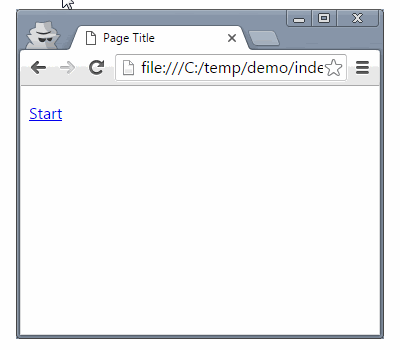Introduction
Screen shots are great to visualize problems and solutions in the world of software and explain your point. A single well selected picture can show more than a long explaining text. Their biggest strength is to illustrate (static) situations.
But when it comes to visualizing sequences and processes, one picture often isn't enough. To visualize several complicated steps, you need a picture for each of them. But even then, the transitions may remain unclear. This is the point where screen records enter the game. By showing not only a static picture but a short sequence of the screen, you can demonstrate a dynamic situation. This scenes, which typically have a length of several seconds, may contain user interactions, application sequences and a lot more.
Example
To see how it works, just have a look at these two screen records. For this example, I used CockosLICEcap [^], which can record an area of the screen and push it into a GIF file.
Result
The final screen record could look like this:

Behind the Scenes
The second GIF shows how this sequence was captured:

File Format
Saving the record as GIF usually is used for small file sizes. They are uncomplicated to handle and can be viewed natively in most of today's web browsers. If you want to show longer sequences or have high demands for image colors, it can be worth thinking about a real movie file format.
Conclusion
Quick screen records are great to visualize a sequence of your application. They can be used instead of a series of screen shots or a text containing a lot of "if-then-finally" statements. Therefore, in software development today, screen records often are used to give a quick demo of a simple program or to show how a complicated task can be done.
History
- 14th March, 2016: Initial version
